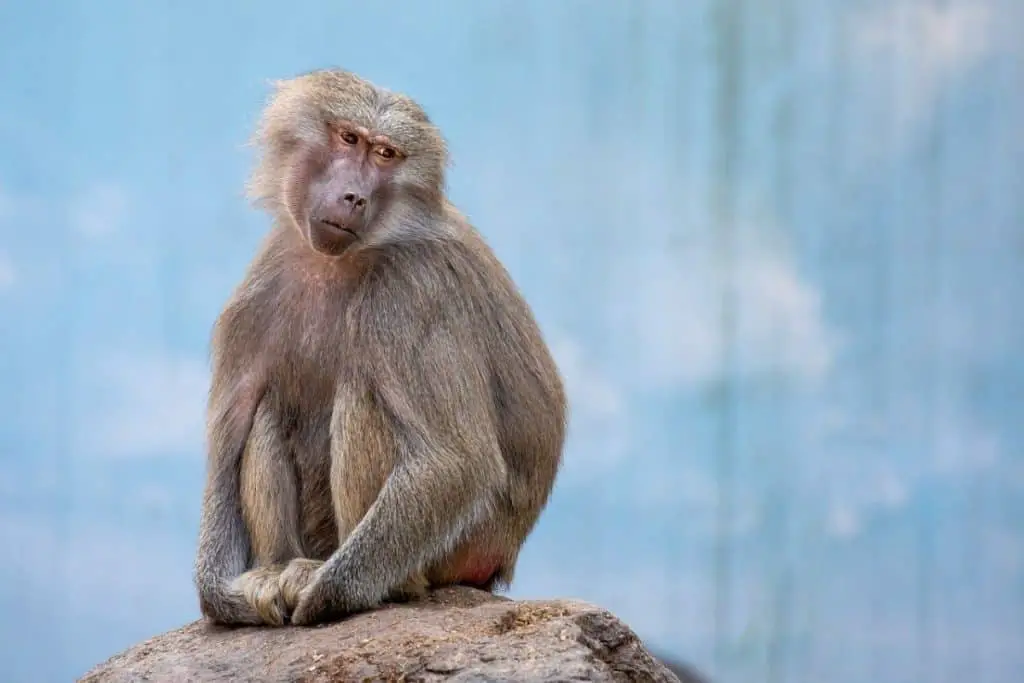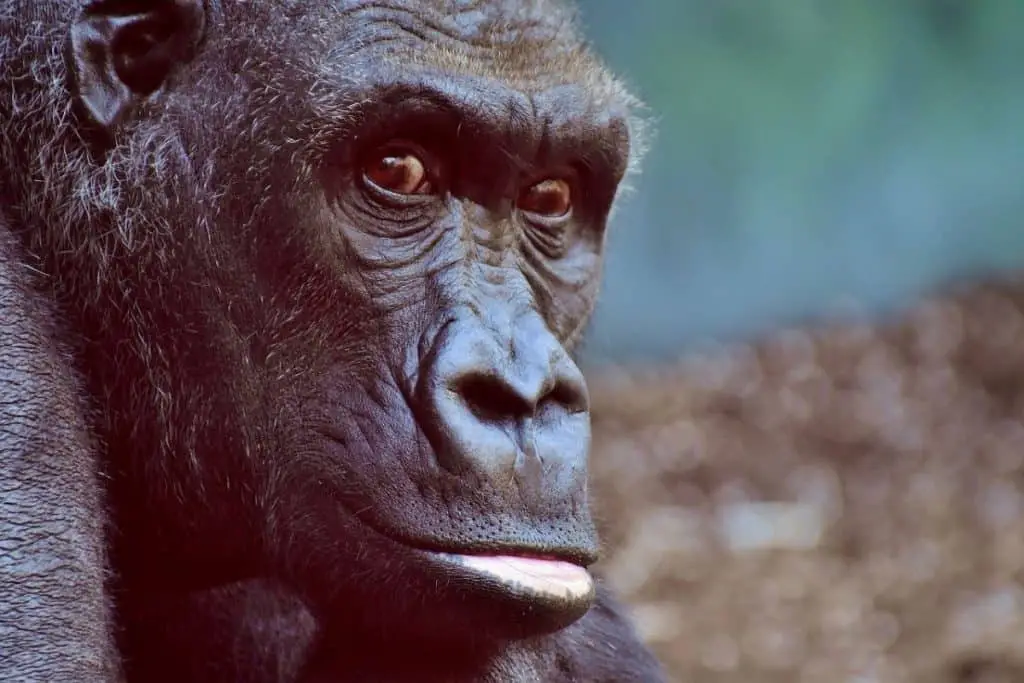With over 500 species of primates worldwide, it should be no surprise that they all fall foul to other animals.
From the smallest pygmy mouse lemur to the largest primate, the Eastern gorilla, all have at least one predator. The Eastern gorilla can be attacked by crocodiles or a leopard, while most other primates are preyed upon by birds of prey, snakes, large cats, and canine family members.
With so many species, it is impossible to mention them all here, but in this article, I look at some of the predators of primates found worldwide.
Do you know what the main characteristics of primates are? Find out here

Differences in arboreal and terrestrial primates
Baboons are generally terrestrial mammals, which can be seen in their body type. Although they sleep in trees and will climb them to get away from a lion, most of the baboon’s life is spent on the ground, where they need to be on the constant lookout for predators. Large cats such as cheetahs, lions, jackals, and hyenas can all kill a baboon.
A female baboon is half as big as a male and does not have the same large canines to ward off an attack, making them an easier target.
There are not many animals where the male is twice the size of the female, and this difference, known as sexual dimorphism, occurs because they are terrestrial.
A baboon’s primary defence is its large teeth and strong jaws. They also have mighty shoulders, which they use along with their muscular bodies. However, baboons are known to team up when in danger or attacked, which is their greatest strength.
A baboon has little chance against a predator such as a leopard, so they will try to bluff to make themselves look as big as possible. Male baboons have a ruff of hair around their shoulders, making them look bigger.
However, female baboons do not have the ruff and are not as aggressive, leaving this to the males.
There are many differences between gorillas and chimpanzees. You can find them here.
This is different from gibbons, which are arboreal. Male and female gibbons are about the same size, while chimpanzees who spend more time on the ground have larger males than females.
The only primate that this is different for is the orangutan. Orangutans live in the trees, and the males are much larger. Orangutans have to be careful about clouded leopards, large pythons, crocodiles, and tigers.
Arboreal primates do not have as many predators as terrestrial mammals. By staying under the top canopy of the trees, they can stay away from attacks from most birds, and large snakes or mammals that are high up can be easily spotted. Arboreal primates do not need to be built with solid muscles, which would negatively affect their agility.
While a langur can run fast and jump up to 30 feet, a baboon will stand its ground against most predators.
Gorillas are terrestrial primates and are the largest primate on Earth. They will stand and fight against almost all animals. However, they can fall foul to crocodiles and leopards.
You can generally see where a primate spends most of its time and if it is terrestrial or arboreal by how it is built and its behaviour. Terrestrial apes and monkeys are often much more aggressive.
Do you know how nature ensures the survival of the fittest?
Adaptations to predators
With over 500 different species, it is not surprising that there is lots of variation between them, and while some can run fast or jump great distances, others are strong, tough, and aggressive. Each of these behaviours is linked directly to how they deal with predators.
Only a few species of primates are capable of staying and fighting when faced with a large predator. Baboons and gorillas are built to defend themselves, as are macaques in Asia, which are terrestrial primates.
Chimpanzees have been seen throwing rocks and stones at baboons competing for food and will also throw rocks at predators.
Many primates have adapted to living in the trees and the fear of predators by developing pads of tough skin on their rump. These pads are called ischial callosities, allow monkeys to sit or sleep on tree limbs and help them balance when sitting. These tough patches of skin also enable monkeys to balance better when resting.
Many arboreal primates try to sleep as far away from the trunk. Leopards and snakes are extremely silent when hunting, but the weight of a large snake or leopard will make the branch sway, alerting them to the danger. The tough patches of skin allow them to sit comfortably, even on smaller branches, without fear of falling off.
Galagos, also known as bushbabies, are small, hand-sized monkeys that can jump distances up to 3 meters to get away from predators. They are arboreal monkeys.
Burying beetles bury entire animals. Find out why here

Because they do not come down to the ground often, galagos are hard for owls and larger cats to catch. Snakes are their largest predator, and genets can usually catch them when they sleep. However, the galagos do have excellent senses, which allow them to detect the danger early, and they can be seen carrying their babies to safety.
The greater galagos species, which are found in East Africa, are much larger and slower. Instead, they do not jump like the smaller bushbabies, opting to walk or run. They are larger with a weight of about 2 kg and prefer larger fruit trees rather than the thorny acacia trees that the smaller species prefer. This does mean that they are in the open more and could be picked off by a bird of prey, a large snake such as a python, or a leopard or caracal.
As with the smaller species, they will sometimes come to the ground where they can be preyed on by more animals. However, they employ alarm calls and have very sharp teeth that they will use if cornered.
The samango and vervet monkeys use their tails to balance when getting away from predators. They use alarm calls to look for predators and will take to the trees if they hear a call. Their main predators are leopards, eagles, pythons, and baboons.
Vervet monkeys are thought to have about 30 different calls, and they will often use the sound of birds or other animals being disturbed as a sign of a predator. They use different calls for aerial or terrestrial predators and will react accordingly.
The predator most dangerous to the samango and vervet monkeys are crowned eagles, who can attack suddenly. Monkeys often retreat into the tree foliage to get away from a hungry eagle.
Unfortunately, with all primates, humans are their main predators.
Do you know why hippos spend so much time in the water? Find out here

